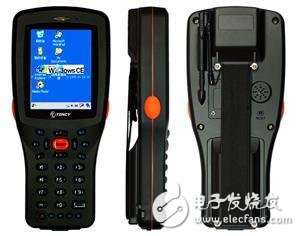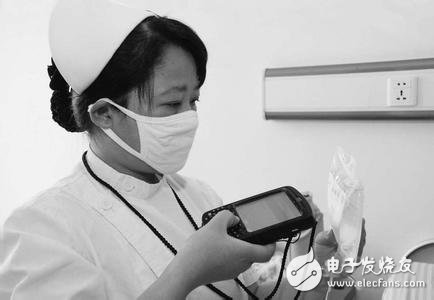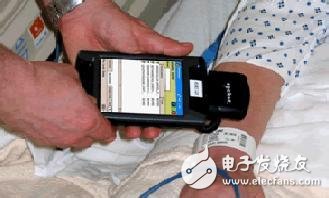I. Introduction
PDA can be used not only to manage personal information (such as address books, plans, etc.), but more importantly, it can browse the Internet, send and receive emails, send faxes, and even use it as a mobile phone. It is especially important that these features are implemented wirelessly. Of course, not all PDAs have all of the above features; even if they are available, they may not be implemented due to lack of corresponding services. However, it can be foreseen that the trend and trend of PDA development is the integration of computing, communication, network, storage, entertainment, e-commerce and other multi-functional. Currently, there is a narrow understanding of PDA. Narrowly defined PDAs can be called electronic notebooks, and their functions are relatively simple. They mainly manage personal information such as contacts, notes and notes, schedules, notes, calculators, recordings, and dictionaries. And these features are solidified and cannot add new features to the user's requirements. The generalized PDA mainly refers to the handheld computer, and of course includes other small digital devices with similar functions. PDAs should be subdivided into four categories: electronic dictionaries, handheld computers, handheld computer devices, and personal communication assistants. The latter two have gradually merged together due to the development of technology and market.

Figure 1 handheld device
Second, the limitations of traditional hospital management information system (His) in nursing activities
1. The execution time of nursing behavior cannot be correctly reflected. Since the nurses can't return to record one after the doctor can't execute a doctor's order at work, they generally recognize the doctor's disintegration time as the execution time, which results in the absence of a record of the actual execution status of each medical order in the computer system, that is, the lack of each execution. The actual executor and actual execution time of the project, because the computer system does not have corresponding real data, can not correctly reflect the implementation of the nursing task, nor can it monitor the quality of care, effectively regulate the medical care behavior, and also give evidence in the case of doctor-patient disputes. There is a lack of legal significance.
2. It is impossible to objectively reflect the occurrence of patient expenses. Since the existing system charges the execution items decomposed in the doctor's copying stage, whether the patient receives the corresponding treatment and how much sanitary material is consumed in practice, the information cannot be recorded in time, which is very It is prone to leakage of billing, such as refund, replenishment, and missed. For example, the hygienic materials that patients need to use are usually prescribed and billed as a doctor's order, but they may be used more or less in actual use. There are quantitative differences, and the cost is objectively different. Some treatments may be performed multiple times, but the nurse can't do it once, usually by pre-counting multiple times or after-time replenishment. Sometimes the treatment that is performed the next day is pre-paid, then one for the patient. The list of days has been confusing and difficult for patients to understand.
3. The actual status of medical care tasks cannot be reflected. Since the application of the existing hospital management information system in the ward is limited to the medical record decomposition (or entry), inquiry, confirmation, and writing of some nursing records at the nurse station, when the nurse is in the execution of the medical order, due to the time of executing the medical order, If it is possible to delay or delay, some human error or improper execution of the doctor's advice will be inevitable, such as omission of a certain medical order, so that there is a certain degree of medical safety hazard.
4. Lack of implementation in the care check system. "Three check seven pairs" is an important part of the nurse's execution of the doctor's advice. In the past, the uniqueness of the patient's identity was mainly determined by the bed number or name displayed on the bedside card. The confirmation of the treatment content was based on the treatment order, infusion order, etc. In this way, there is a risk of patient identification errors, and it is impossible to identify treatment cases and errors. This is very likely to occur when the patient is given the wrong medicine, and there is a very large medical risk.
5. Some nursing documents require the nurse to spend a lot of time to complete. If the nurse measures the patient's temperature or other vital signs, the nurse needs to record the body temperature on the paper in the ward, then transcribe to the nurse station, and finally draw the body temperature list, wasting the nurse's many hours, so there is no more time to care for the patient.

Figure 2 nurse handheld PDA system
Third, the basic process and main technical content of PDA in clinical
The application research of modern digital medical equipment is becoming an important research topic in the medical field at home and abroad. Among them, PersonalDIGI-al Assistant (PDA) has been popularized in developed countries such as Europe and the United States. It is small in size and easy to carry. With operating system, equipped with wireless network card, can be connected to the hospital information system database through wireless LAN, and laser scanning equipment can scan bar code, which is an ideal patient bedside information. This technology improves the efficiency and management of hospitals and increases the competitiveness of hospitals. So it is accepted by more and more hospital administrators.
1. Basic process and use of PDA in the clinic
When the patient is admitted to the hospital, the wristband barcode is printed to the patient at the nurse station (some hospitals print at the hospital). The wristband barcode contains basic information about the patient, such as the patient's name, gender, ID number, bed number, and so on. When the nurse is inspecting the room, the patient's wristband is scanned with the laser scanning head on the PDA that is carried on the PDA, and the nursing data collected after the information has no error rate, such as body temperature, pulse breathing, blood pressure, bowel movement, and body fluid intake and output. The data is immediately presented in the mobile care system after the bedside entry is saved, and the nursing form such as the body temperature list, the blood pressure single, the urine sugar record list is generated in the mobile care system.
The doctor's doctor's order on the HIS system computer is printed by the main class nurse after checking the proof. The bar code infusion card contains the basic information of the patient. Each responsible nurse can open the PDA bedside care management system by clicking and using the user. After the password is verified, enter the ward setting of the corresponding department, use the PDA to scan the patient's infusion card, and confirm whether the patient to be infused with the barcode infusion card is in compliance with the information. If the PDA shows the corresponding patient in the PDA, the newly opened and executed medical order is displayed. The time and frequency of each medical order are displayed. The items such as oral medicine, intramuscular injection, and intravenous drip are displayed on the PDA in turn. The nurse chooses to execute the medicine, injection or vital signs. When the nurse completes a job and clicks on the corresponding item, the computer will automatically record the execution time and the operator. The implementation of the doctor's advice is immediately passed back to the HIS system through the mobile care management system to provide the doctor with the treatment status of the patient. When you are in the process of performing a doctor's order, you may have missed the doctor's order, but if the nurse looks in the PDA in time, you will find your own mistakes, so that the patient can use the medicine on time.
The head nurse can also check the implementation of the doctor's advice throughout the day, the completion of various nursing records, the statistics of the ward care workload and the workload of the nurses.
2. PDA main technical content
To achieve the clinical use of PDA, first establish a wireless network in the ward (in accordance with the IEEE802.11b standard) and install a wireless AP in the ward (AcessPoint is compatible with the Ethernet standard IEEE802.3 and the wireless local IEEE802.11b standard). Supporting 64 and 128-bit equivalent encryption (WEP), the PDA becomes a client of the HIS system through the wireless AP, and the client software is installed on the PDA. Through the software, the scanned nurse operation flow information, patient ID IV, and the significance of PDA application in the clinic are accepted.
In Western Europe and the United States, a small number of hospitals have cancelled ward nurse stations, and nursing data is collected and entered directly at the patient bed by wireless computers, which not only improves the efficiency and quality of care, but also increases the affinity of medical staff and patients. The patient gets more care. The application of handheld terminals, barcode wristbands and other technical means to clinical care will bring results to hospital management in several ways:
1. Help the nurse to properly perform the doctor's advice. When a nurse conducts a round of ward rounds or performs a doctor's order, the PDA is used to scan the patient's barcode wristband and barcode infusion card to check the patient's information to avoid unnecessary errors.
2. It is the process of tracking medical services throughout the process. Strengthening the cooperation of medical care and mobilizing the enthusiasm of nursing staff. The PDA's doctor's prompt tone, SMS function, etc. provide a scientific and effective guarantee for busy clinical nursing work, reducing the information transmission errors in medical language communication. At the same time, responsible nurses can provide patients with various treatment and nursing information in a timely and effective manner, which is conducive to establishing a good relationship between nurses and patients and fully mobilizing the enthusiasm of nursing staff.
3. Promote the development and innovation of nursing management, increase the quality control of nursing links, help the head nurse to master the general nursing status, and display the work of the general and a nurse in time for the head nurse's authority. The statistical results are displayed in the form of weight values, which fully quantifies the nursing work, strengthens the depth and breadth of management, and promotes the process of hospital digital development.

In summary, the PDA provides an objective basis for the performance appraisal of medical staff, helping the hospital to truly achieve the reward and lazy. Its fundamental purpose is to reduce the error rate, improve the quality of medical services, and embody the core principle of patient-centered.
Wireless Bluetooth headphone , stereo bluetooth Headphone
Main features
1.Vibration reminding when phone call comes in.
2.rubbish finish with Detachable cable
3.Delivers enhanced audio and bass response and a host of calling features in a sleek, comfortable design.4.Unique, provides all day comfort and ease of use.
5.High quality Bluetooth Headset with music & phone functions.
6. Gift box packing per pc

Wireless Bluetooth Headphones,Wireless Headphones,Wireless Earphones,Wireless Bluetooth Earbuds
Shenzhen Greater Industry Co., Ltd. , https://www.szgreater.net